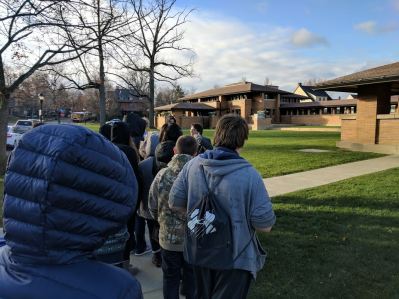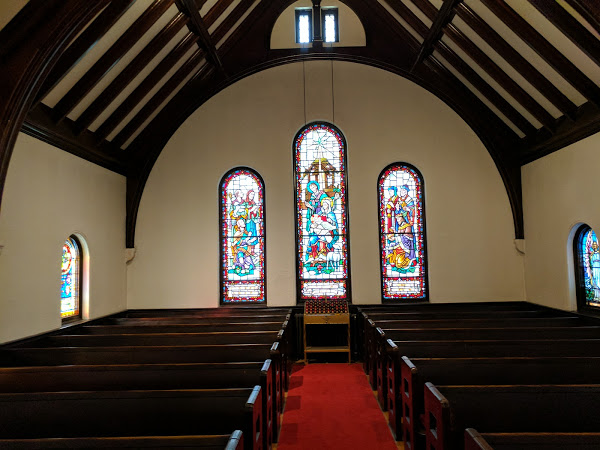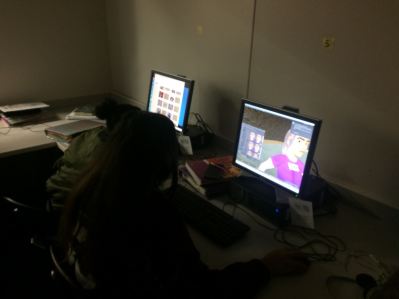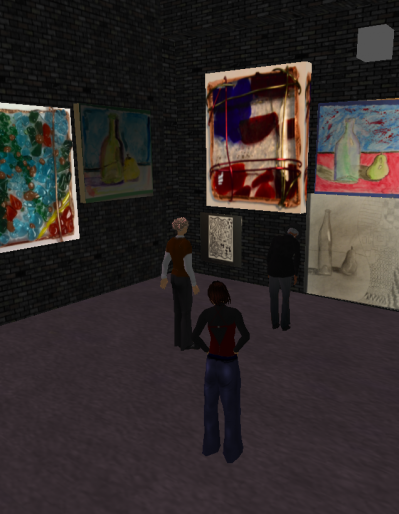Fredonia Middle School - The Digital Art Museum
Virtual Reality, Simulations, and Digital Design are all topics in the present and future landscape of educational technology. Fredonia Middle School Art Teacher Sheila Cannon and Technology Integrator Andrew Wheelock teamed up to create a Virtual Artist Island where students bring digital creativity to life. This project was designed to help students learn and evaluate new technologies which are shaping the future. Utilizing tools such as Google Sketchup, CoSpaces, and OpenSim Virtual Worlds, the class created an Island where students could communicate, build, learn, and, play! Students created works of art and architecture which were aligned to ISTE and State Art Standards. Their creativity and innovation is inspiring.
Many of us have lived through the transformation of the music industry from scratchy record players to small, portable, music devices that provide incredible high-quality sound. Dr. Michio Kaku, a physicist, recently outlined the notion that education will follow a similar trajectory from paper pencil to portable, personalized, on-demand learning1. So where do the Arts fit in with this shift? Our idea: Create a Digital Art Museum!
What did we do?
In a nutshell, we had middle school students create artwork over a 10-week period. At the end of the quarter, they digitized their various art pieces into a Virtual World, known as the Islands of Entertainment2. Using their own personal avatars, students imported their creations into this virtual environment creating an exhibit for all their classmates to see and explore.
Student’s learned some key skills for the future. Notably, collaboration within a shared space, digital building and design, as well as art elements of perspective, display, and to some extent photography. Perhaps best of all: They were engaged, motivated, and having FUN!
Were there challenges?
Most definitely! As with most high-powered technology applications there was a learning curve. We tried to minimize this learning curve by creating tutorials3 that would walk students through the tech and art processes at their own pace. Many of today’s learners are adept at using video tutorials to help them with their games, homework, and daily challenges.
What about tie-in’s to other educational or community areas?
Yep, we did that too. In Buffalo, we had the opportunity to visit the Darwin Martin House4 which is one of Frank Lloyd Wright’s (FLW) prairie style masterpieces. The museum and their staff gave us an amazing overview of not only the architectural concepts of FLW, but his unique “Light Screen” glass window artistry. We also visited the Church of the Good Shepherd, which displayed original Louis C. Tiffany stained glass windows.
What about tie-in’s to other educational or community areas?
Yep, we did that too. In Buffalo, we had the opportunity to visit the Darwin Martin House4 which is one of Frank Lloyd Wright’s (FLW) prairie style masterpieces. The museum and their staff gave us an amazing overview of not only the architectural concepts of FLW, but his unique “Light Screen” glass window artistry. We also visited the Church of the Good Shepherd, which displayed original Louis C. Tiffany stained glass windows.
What art objectives were involved?
Our students created a piece of fused glass after viewing the glass styles of Frank Lloyd Wright and Louis Comfort Tiffany5 that they saw on our field trip. We were fortunate to have both glass styles in buildings near each other in Buffalo. We further studied the artist’s styles in the classroom and designed our own pieces using abstract, non-objective or representative styles. The students were given a 3x3" clear piece of glass and a demonstration on how to break additional pieces to assemble it in their own desired style to fuse.
After fusing, these pieces were embellished with copper tape and various colored wires to complete the work. Each piece was photographed and downloaded to prepare for our cyber art show experience. This is where Andy Wheelock, our Technology Coordinator, helped eased our kids into this world.
Each student had a password and their own avatar. They were taught how to maneuver through the world, create prims (shapes to place their artwork on) and upload their works into their desired location. The computer lab was electric! The laughing and the excitement was beyond what we expected! They could fly, and see each other as they moved around the cyber island looking for a space to build their art display. Some students collaborated to build near each other while others wanted a separate space of their own. When the students had completed the assignment of creating their own exhibition space, they could alter their avatar. They could change their physical features (shape of their face, body, hair, and clothing) in any way they desired.
The students’ excitement being in this magical world was beyond anything we had seen in them before! They were, for the first time, combining their manually created artworks into a virtual three-dimensional digital world. They were no longer just participants in video games. They were creators! It only took the knowledge of a savvy tech teacher and an art teacher to get it done.
Why are we climbing this mountain?
The trends, jobs, and new opportunities in our tech driven society are changing rapidly. The artists and architects of the day are using digital tools to replace their drawing boards and canvases. Even contractors and home improvement gurus are using digital representations in their work. These are real world skills that can translate to good paying jobs and opportunities for our students. Additionally, many artists are becoming video game designers, as well as creating digital scenery for film. By exposing students to these technologies, we are hoping to inspire their creativity along with their job prospects.
Okay, so what comes next?
With our first year under our proverbial belts, we are gearing up to do more for the upcoming school year. Here are our thoughts:
- Use other programs to integrate the concept of digital creation. Cospaces6 is a fantastic new online/multi-device platform that allows students to create digital creations. Once they have created a scene, students can view their projects using VR Viewing devices. Cospaces has free to use tools as well as new educational pricing and features.
- Another program we can use to create and then transfer to the virtual world is Google’s Sketchup7 Program. This program offers various functionality options, but its educational use version works great for student designed creations. These creations can then be exported in various forms which can be used in the Islands of Enlightenment.
- Lastly, we would like to look towards creating more photography based projects using the programs built in picture taking tools. Movie Making (referred to as machinima8) is also a long-term goal of ours. This would involve students using the virtual environment and their art skills to create digital movies of their own creations.
Interested in collaborating? Learning More?
Let’s Connect!
Contact
- Sheila Cannon, Art Teacher, Fredonia Middle School, scannon@fcsd.wnyric.org
- Andrew Wheelock, Technology Coordinator, Erie 1 BOCES, awheelock@e1b.org
- Coffee With a Geek: Conversations about Education and Technology
Resources
References
- "ISTE 2016: Michio Kaku Says Education Needs a Revolution | EdTech ...." 27 Jun. 2016. Accessed 25 Jul. 2017.
- "Islands of Enlightenment." Accessed 25 Jul. 2017.
- "Islands of Enlightenment - Google Sites." Accessed 25 Jul. 2017.
- "Frank Lloyd Wright's Martin House Complex." Accessed 25 Jul. 2017.
- "Louis Comfort Tiffany - Wikipedia." Accessed 25 Jul. 2017.
- "CoSpaces." Accessed 25 Jul. 2017.
- "SketchUp." Accessed 25 Jul. 2017.
- "Machinima - Wikipedia."Accessed 25 Jul. 2017.
This work is licensed under a Creative Commons Attribution 4.0 International License.










